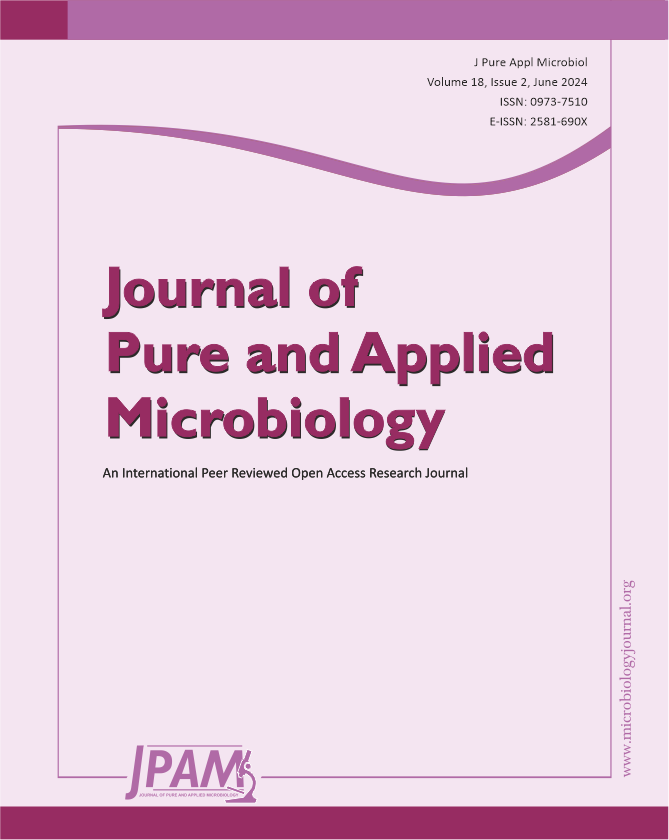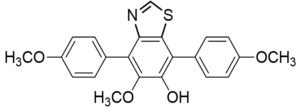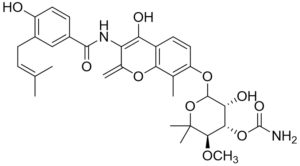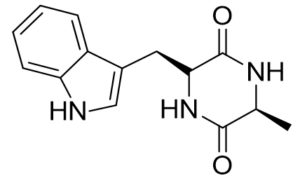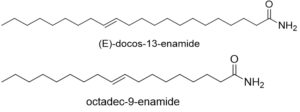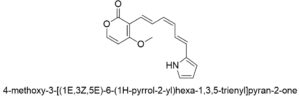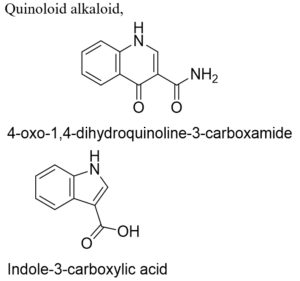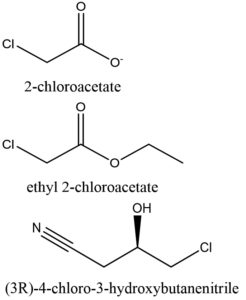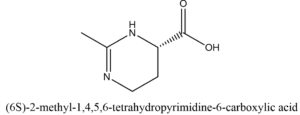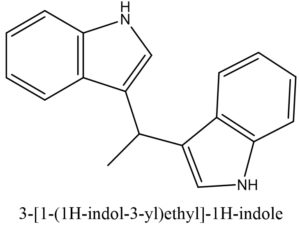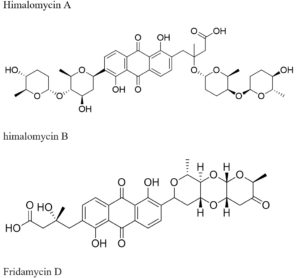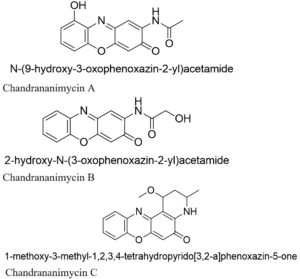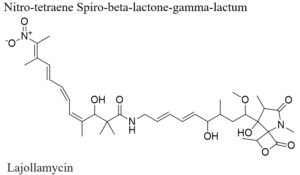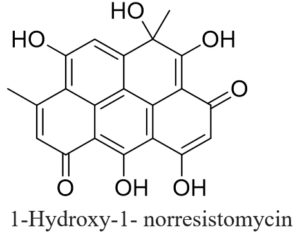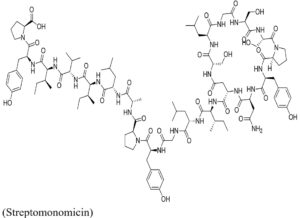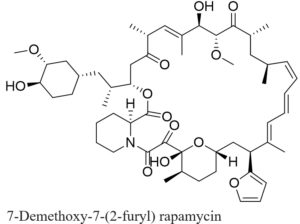Salt Tolerant Microbes are a group of microorganisms that grow, develop, and survive in extremely high salt concentrations. Based on their tolerance level they generally grow up optimally at pH values beyond 9.0, but the growth is inhibited at the pH value that is most closely associated with neutral 6.5. They have minimal dietary needs and a good salt quantity that is high enough to osmotic pressure. They can produce biological metabolites that have certain actions such as antibacterial, antifungal, antioxidant, and anticancer. We discussed in this article various pharmaceutical formulations of salt-tolerant microbes, every formulation shows the specific pharmacological actions like anti-cancer activity, anti-oxidant activity, and anti-microbial activity, and also discusses methods for the biosynthesis of salt-tolerant microbes’ nanoparticles.
Salt Tolerant Microbes, Nanoparticles, Metabolites, Microorganism
Salt-tolerant microbes are divided into three main categories i.e., Mild, Moderate, and High. Salt Tolerant Microbes require levels of sodium chloride above 3% in salt water.1 Several factors affect the tolerance criteria like growth medium, pH, temperature, and salt concentration. They generally grow up optimally at pH values beyond 9.0, but the growth is inhibited at the pH value that is most closely associated with neutral 6.5.2,3 The general mechanism followed by Salt Tolerant microbes for surviving in varying saline conditions.
They have minimal dietary needs and a good salt quantity that is high enough for osmotic pressure.4 The processes of their halo adaptation (halophilic bacteria can maintain growth and development under salinity conditions) on the internal storage of KCl (potassium chloride) approximately 37% or maintain the equilibrium of sodium ions in the cell plasma and resist the osmotic pressure of the outside surroundings caused by the excessive salinity.
These organisms act on an osmoregulatory mechanism that helps them to grow in acute concentration by balancing ion exchange with the surroundings and their tolerance along with surviving for a long-life span brings the Salt Tolerant Microbes into a new era of development.5-8
Hypersaline regions offer several possibilities for the production of additional metabolites with industrially relevant bioactivities.9,10
The secondary metabolites produced by the Salt Tolerant Microbes show properties against drug-resistant bacteria. Using these metabolites with the help of nanotechnology will be used as a powerful tool in pharmaceutical sciences.11-13
They can produce biological metabolites that have certain actions such as antibacterial, antifungal, antioxidant, and anticancer. The overuse of basically antibiotic drugs has resulted in the development of drug resistance (DR), which reduces or eliminates their efficacy.14,15 The DR is shown in the human body (Cancer cells and micro-organisms). So, to overcome DR issues advanced technologies have been introduced example drug-resistant strains using biomaterials and metabolites. The challenge is to overcome the difficulties related to drug resistance not only in animals and environmental aspects but also in humans. Two types of genes are responsible for resistance, where the first is horizontal gene transfer (HGT) and the second is genes that are already encoded in the bacterial genome that can give antibiotic resistance by mutation and activation of mobile elements. The recent drug resistance example is third-generation cephalosporin caused by a mutation in genes encoding penicillin-inactivating enzyme. The invention of new medications is necessary to overcome DR issues for better treatment and the Salt Tolerant Microbes (active metabolites) nanoparticles attracted a lot of attention. Some examples of DR have been observed in clinical strains against various antibiotics, affecting both gram-negative and gram-positive bacteria. Resistance is perceived in Haemophilus influenza to ampicillin, in Helicobacter pylori to clarithromycin and in Staphylococcus aureus shows intermediate resistance to vancomycin. Pseudomonas aeruginosa and Neisseria gonorrhoeae to aminoglycosides and quinolone, Enterobacteriaceae to cephalosporins and carbapenems. Furthermore, Enterococcus faecium exhibits resistance to cephalosporin and vancomycin, whereas Streptococcus pneumoniae discerns resistance to penicillin. Unexpectedly, the quorum-sensing mechanism of Pseudomonas aeruginosa led to the development of fluconazole resistance in Candida albicans. In response to these challenges, there has been a growing interest in utilizing halophilic biomolecules to combat DR bacteria.16-20
Nano formulation of existing salt tolerant microbes for the targeted diseases
Several factors are required for the biosynthesis and formulation of bioactive metabolites for example uniform size, high purity, and composition for synthesis through selected techniques.21,22
Various existing nanoformulations of Salt Tolerant Microbes with different targeted delivery like anticancer, antimicrobial, and antioxidant are discussed in Table 1.
Table (1):
Various nano-formulations of Salt Tolerant Microbes
Targeted delivery |
Salt Tolerant Microbes |
Nano-formulations |
Ref. |
|---|---|---|---|
Anticancer |
Archaeal halophile Haloarchaea Halomonas elongata. Ideomarina species |
nanoparticles synthesis, and gas vesicles Silver nanoparticles Selenium nanoparticles (antibacterial and antioxidant) Selenium nanoparticles |
29 |
Antimicrobial |
Halophilic Archaea Chromohalobacter salexigens, Halobacillus halophilus, and Halomonas elongate Archaeal Salt Tolerant Microbes Halophilic archaeon Extremophilic bacterium-A30 Archaebacteria, actinomycetes, cyanobacteria, and fungi. |
Encapsulation of carotenoids isolated from halophilic Archaea in oil-in-water (O/W) nano- and micro-emu Ectoine nasal spray Nanoparticles synthesis, and gas vesicles Gas vesicle nanoparticles Silver nanoparticles Silver nanoparticles |
30,31 |
Antioxidants |
Streptomyces Marietta, Bacillus subtilis, Bacillus tequilensis, and Bacillus Haynes Haloferax volcanii BBK2, Haloarcula japonica BS2, and Halogeometricum borinquense E3 |
Methanolic extract of halophilic bacterial strain Nanoneedles and selenium nanospheres |
32,33,34 |
Different methods for preparing nanoparticles with key findings are discussed in Table 2.
Table (2):
Methodology and Key Findings (application) of Biosynthesized Nano-particles
No. |
Methods |
Key- findings |
Ref. |
|---|---|---|---|
1 |
Dynamic aggregation with radiation-induced cross-linking |
Drug carrier |
35-39 |
2 |
Genetically encoded synthesis in E. coli |
Treatment of cancer-conjugated drug |
40, 41 |
3 |
Electrospraying |
Doxorubicin drug delivery model: ph-responsive drug |
42-46 |
4 |
Ionic gelatin |
Delivery of hydrophobic bioactive compounds |
47 |
5 |
Redox reaction |
Anti-cancer treatment |
48 |
6 |
One pot synthesis |
Platinum drugs delivery to cancerous cells |
49, 50 |
7 |
Lyophilization |
Treatment of breast cancer |
51 |
8 |
Ring-opening polymerization |
Drug delivery for prostate carcinoma |
52 |
9 |
Self-assembly |
Biosensors |
52 |
Currently, the nano-formulation of Salt Tolerant Microbes’ active metabolites is considered a scientific tool in the pharmaceutical field. The current approach is focused on treating antibiotic resistance. The study suggests that the metabolite of Salt Tolerant Microbes produced due to the lack of nutrients, starvation, dehydration, UV-rays, and imbalanced ion concentration makes them deserving candidates for drug discovery. Some examples are also discussed like Anti-cancer activity (Table 3), and anti-oxidant activity (Table 4) in the table we also discuss some tests of anti-oxidant activity like DPPH stands as 2,2-diphenyl-1-picrylhydrazyl is a chemical compound commonly used to measure the antioxidant properties of a substance. The principle behind the DPPH assay is to determine antioxidant properties, through which antioxidant substances will neutralize the free radical of DPPH. ABTS stands for (2,2-casino-bis (3-ethylbenzothiazoline-6-sulfonic acid)), and it measures the ability of antioxidants to scavenge free radicals and prevent oxidation. It observed the reduction of the blue-green color of the solution. The nitric oxide test is used to measure the antioxidant activity of a substance. Nitric oxide is a free radical on which different substances are tested to determine their antioxidant properties by using various methods such as the Griess reagent method.
Table (3):
Anti-cancer activity of a few Active Metabolites of Salt Tolerant Microbes with targeted deliveries
No. |
Salt Tolerant Organism |
Metabolite |
Targeted delivery |
Ref. |
|---|---|---|---|---|
1 |
Bacillus species |
3-Methyl-2(2-isopropyl) furan |
Cervical carcinoma |
53 |
2 |
Nocardiopsis species HYJ128 |
Borrelidin C, Borrelidin D |
Stomach and leukemia carcinoma |
54 |
3 |
Streptomyces sp. |
Salternamide A |
Colorectal and gastric cancer |
55 |
4 |
Streptomyces species. WH26 |
Naphthomycin |
Lung adenocarcinoma, cervical carcinoma |
56 |
5 |
Nocardiopsis species |
Methyltetrangomycin |
Liver cancer |
56 |
Table (4):
Active metabolites of Halophilic micro-organisms responsible for anti-oxidant activity
Anti-microbial activity (Table 5) of a few Active Metabolites of Salt Tolerant Microbes with targeted deliveries. The production of carotenoid colors, retinal amino acids, hydrolytic enzymes, and suitable solutes like macromolecule stabilizing agents, biopolymers, and biofertilizers by halophilic microbes is well known. The production of bioplastics, artificial retinas, photoelectric devices, holograms, biological sensors, and other products uses salt-tolerant microbes and extremely halophilic aerobic archaea, also known as haloarchaea, plays a significant role in the industry.23-28
Table (5):
Salt Tolerant Microbes metabolites examples with antimicrobial activities
No |
Salt Tolerant Microbes Organisms |
Metabolite |
Activity |
Ref. |
|---|---|---|---|---|
1 |
Nocardiopsis species |
Antibacterial |
61 |
|
2 |
Bacillus subtilis |
Antibacterial, antifungal |
61 |
|
3 |
Aspergillus flocculosus |
Antibacterial |
61 |
|
4 |
Bacillus subtilis |
Glycoprotein |
Antibacterial, antifungal |
62 |
5 |
Norcardiopsosis terrae |
Antibacterial and anticancer |
62 |
|
6 |
Halomonas salaria |
Amylase Protease 8-anilinonaphthalene-1-sulfonic acid (lipase) (2S,3R,4S,5S,6R)-2-[(2R,3S,4R,5R,6S)-4,5-dihydroxy-2-(hydroxymethyl)-6 [(2R,3S,4R,5R,6R)-4,5,6-trihydroxy-2-(hydroxymethyl)oxan-3-yl]oxyoxan-3-yl]oxy-6-(hydroxymethyl)oxane-3,4,5-triol (cellulase) Pectinase DNAase |
Antimicrobial |
62 |
7 |
Actinomyces species |
Antimicrobial |
62 |
|
8 |
Bacillus subtilis |
Carotenoids Polyhydroxy alkanoates |
Antibacterial |
63 |
9 |
Halomonaselongata |
Antimicrobial |
63 |
|
10 |
Halobacilluskarajiensis |
Peptide furanomycin |
Antimicrobial |
63 |
11 |
Vibrio parahaemolyticus B2 |
Antimicrobial |
63 |
|
12 |
Streptomyces species B6921 |
Antimicrobial |
64 |
|
13 |
Actinomadura species M048 |
Antimicrobial |
64 |
|
14 |
Streptomyces nodosus NPS007994 |
Antimicrobial |
64 |
|
15 |
Steptomyces chibaensis species AUBN1/7 |
Antimicrobial |
64 |
|
16 |
Vibriosp. A1SM3-36-8 |
Antibacterial |
65 |
|
17 |
Pseudonocardia endophytica VHK-10 |
Antimicrobial |
66 |
|
18 |
Halobacilluskarajiensis, Alkalibacillus almallahensis |
Peptide furanomycin |
Antimicrobial |
66 |
19 |
Steptomonosporaalba |
Antibacterial |
67 |
|
20 |
Streptomyces species CNQ-418 |
Marinopyrroles A Marinopyyroles B |
Antibacterial |
67 |
21 |
Marinispora species NPS12745 |
Antimicrobial |
68,69 |
|
22 |
Streptomyces hygroscopicus BDUS 49 |
Antimicrobial |
69 |
Future perspective
Public health is currently at risk due to the widespread development of antibiotic resistance. Millions of lives have been saved by antibiotics over the years, yet overuse of these drugs has resulted in the development of multi-drug resistant (MDR), which reduces or eliminates their efficacy. Antibiotic resistance has recently reached critical levels, indicating a rise in fatality in the healthy community and a near-term concern for hospitalized patients. In actuality, problems with MDR infections can cause the majority of patient deaths. The exploitation of all organic and environmentally friendly assets, including major environments as an opportunity for new antibiotic discoveries, is being prompted by the urgent need to develop new antimicrobial medicines that are effective and safe. In 1982, Rodriguez-Valeraetal reported the discovery of the first antibacterial substances produced by salt-tolerated microbes. Halocin is the name given to compounds released by numerous Halobacterium species that can lyse and kill the local microbiota. Haloarchaea synthesize peptides and antimicrobial peptides (AMPs) known as halocins. Although some halocins play an ecological and environmental role, less research has been done on how they interact with human infections.70
The clinical significance of salt-tolerated microorganisms is rarely described in the race against time, and antimicrobial intervention against the most significant risk category of human pathogens is lacking. Staphylococcus aureus, Klebsiella pneumoniae, Acinetobacter baumannii, Enterococcus faecium, and Pseudomonas aeruginosa are still potential pathogens.71
In the generation of advancement, nanotechnology has been proven as the speedily evolving field that deals with the size of material 1 to 100 nm in diameter. biomolecules like proteins, nucleic acid, lipids, and polysaccharides are proven to be found in nature and can be used in the development of nanoparticles because they possess their individual properties. To develop distinctive works of art and purpose biomolecules can be engineered with nanoparticles which can result in a Novel Biomolecule Nanoparticle hybrid. So far, there are limited articles available for biomolecule nanoparticles and Salt Tolerant Microbes that can be persuaded for the creation of drug-resistant bacteria to make a variety of antibacterial drugs and anti-cancer drugs. hence, contemporary information on the technology and current trends in an individual field is required. the present review is about the Salt Tolerant Microbes and the metabolites formed by them and integrating them with nanotechnology to form biological nanoparticles which can be considered as new trends in the field of medicine and pharmaceutical field.72
As this review proceeds, the study focuses on the Salt Tolerant Microbes, their origin, and the mechanism through which they survive in extreme saline conditions. along with they also produce bioactive agents with significant uses and applications in the pharmaceutical and healthcare area. Salt Tolerant Microbes show diverse significance in the production of bioactive compounds that show therapeutic properties such as antioxidant, antimicrobial, and anti-cancer. Due to their more distinctive properties, these can be considered novel drugs. A further highlight is to focus the beam toward the integration and conjugation of these bioactive substances with nanoparticles for novel perception. The nanotechnology to form salt-tolerant microbes-mediated nanoparticles can be considered a new trend in the pharmaceutical field. This study will also be helpful in the MDR of antibiotics in the pharmaceutical field.
ACKNOWLEDGMENTS
None.
CONFLICT OF INTEREST
The authors declare that there is no conflict of interest.
AUTHORS’ CONTRIBUTION
All authors listed have made a substantial, direct and intellectual contribution to the work, and approved it for publication.
FUNDING
None.
DATA AVAILABILITY
All datasets generated or analyzed during this study are included in the manuscript.
ETHICS STATEMENT
Not applicable.
- Abdollahnia M, Makhdoumi A, Mashreghi M, Eshghi H. Exploring the potentials of halophilic prokaryotes from a solar saltern for synthesizing nanoparticles: The case of silver and selenium. PloS One. 2020;15(3):e0229886.
Crossref - Abirami G, Ramprasath C, Arthi, Mathivanan N. Anticandidal activity of halophilic bacterium Vibrio azureus MML1960 isolated from Kelambakkam Saltpan, Tamil Nadu, India. India Res J Biotechnol. 2018;13(2):8-20.
- Ahmed S, Ahmed M Z, Rafique S, et al. Recent approaches for downplaying antibiotic resistance: Molecular mechanisms. BioMed Res Int. 2023;2023:5250040.
Crossref - Alavi M, Thomas S, Sreedharan M. Modification of silica nanoparticles for antibacterial activities: mechanism of action. Micro Nano Bio Aspects. 2022;1(1):49-58.
Crossref - Al-Kordy MH, Sabry HA, Mabrouk S. Photocatalytic and antimicrobial activity of zinc oxide nanoparticles synthesized by halophilic Alkalibacillus sp. w7 isolated from a salt lake. Egyptian Journal of Aquatic Biology and Fisheries. 2020;24(4):43-56.
Crossref - Arul D, Balasubramani G, Balasubramanian V, Natarajan T, Perumal P. Antibacterial efficacy of silver nanoparticles and ethyl acetate’s metabolites of the potent halophilic (marine) bacterium, Bacillus cereus A30 on multidrug-resistant bacteria. Pathog Glob Health. 2017;111(7):367-382.
Crossref - Aslam S, Sajid I. Antimicrobial potential of halophilic actinomycetes isolated from a saline lake against various multi-drug resistant bacterial pathogens causing ventilator-associated pneumonia. Int J Infect Dis. 2014;21(S1):205.
Crossref - Chaari M, Theochari I, Papadimitriou V, Xenakis A, Ammar E. Encapsulation of carotenoids extracted from halophilic Archaea in oil-in-water (O/W) micro-and nano-emulsions. Colloids Surf B Biointerfaces. 2018;161:219-227.
Crossref - Chen J, Cong X. Surface-engineered nanoparticles in cancer immune response and immunotherapy: Current status and future prospects. Biomed Pharmacother. 2023;157:113998.
Crossref - Corral P, Amoozegar MA, Ventosa A. Halophiles and their biomolecules: Recent advances and future applications in biomedicine. Marine Drugs. 2020;18(1):33.
Crossref - Das A, Satyaprakash K, Das AK. Extremophilic fungi as a source of bioactive molecules. Extremophilic Fungi. Springer Nature Singapore. 2022:489-522.
Crossref - Dutta B, Bandopadhyay R. Biotechnological potentials of halophilic microorganisms and their impact on mankind. Beni Suef Univer J Basic Appl Sci. 2022;11(1):75.
Crossref - Elyasifar B, Jafari S, Hallaj-Nezhadi S, Chapeland-Leclerc F, Ruprich-Robert G, Dilmaghani A. Isolation and identification of antibiotic-producing halophilic bacteria from dagh barmaid and haj aligholi salt deserts, Iran. Iran Pharm Sci. 2019;25(1):70-77.
Crossref - Fareed N, Nisa S, Bibi Y, et al. Green synthesized silver nanoparticles using carrot extract exhibited strong antibacterial activity against multidrug-resistant bacteria. J King Saud Univ Sci. 2023;35(2):102477.
Crossref - Gagliardi A, Giuliano E, Venkateswararao E, et al. Biodegradable polymeric nanoparticles for drug delivery to solid tumors. Front Pharmacol. 2021;12:601626.
Crossref - Giani M, Montoyo-Pujol YG, Peiro G, Maria Martinez-Espinosa RM. Halophilic carotenoids and breast cancer: From salt marshes to biomedicine. Marine Drugs. 2021;19(11):594.
Crossref - Giordano D. Bioactive Molecules from Extreme Environments. Marine Drugs. 2020;18(12):640.
Crossref - Giordano D. Bioactive molecules from extreme environments II. Marine Drugs. 2021;19(11):642.
Crossref - Girao M, Ribeiro I, Carvalho M de F. Actinobacteria from marine environments: A unique source of natural products. Natural Products from Actinomycetes Springer Singapore. 2022:1-45.
Crossref - Gocheva Y, Angelova M, Krumova E. Potential of Halotolerant and Halophilic Fungi as a Source of New Extracellular Enzymes and Antimicrobial Compounds. Acta Microbiol Bulg. 2021;37(2):57-68.
- Huang SJ, Wang TH, Chou YH, et al. Hybrid PEGylated chitosan/PLGA nanoparticles are designed as pH-responsive vehicles to promote intracellular drug delivery and cancer chemotherapy. Int J Biol Macromol. 2022;210:565-578.
Crossref - Huang SX, Zhao LX, Tang SK, Jiang CL, Duan Y, Shen B. Erythronolides H and I, new erythromycin congeners from a new halophilic actinomycete Actinopolyspora sp. YIM90600. Organic Letters. 2009;11(6):1353-1356.
Crossref - Hui M L Y, Tan L TH, Letchumanan V, et al. The extremophilic Actinobacteria: From microbes to medicine. Antibiotics (Basel, Switzerland). 2021;10(6):682.
Crossref - Ibrahim KS, Aishwarya M, Kannan RP. Secondary Metabolites from Extremophiles with Therapeutic Benefits. Recent Advances and Future Perspectives of Microbial Metabolites. 2023.
Crossref - Jose PA, Santhi VS, Jebakumar SRD. Phylogenetic-affiliation, antimicrobial potential and PKS gene sequence analysis of moderately halophilic Streptomyces sp. inhabiting an Indian saltpan. J Basic Microbiol. 2011;51(4):348-356.
Crossref - Kim J, Shin D, Kim SH, et al. Borrelidins C-E: New antibacterial macrolides from a saltern-derived halophilic Nocardiopsis sp. Mar Drugs. 2017;15(6):166.
Crossref - Kim SH, Shin Y, Lee SH, et al. Salternamides A-D from a halophilic Streptomyces sp. Actinobacterium. J Nat Prod. 2015;78(4):836-843.
Crossref - Lin Z, Wu G, Zhao L, Lai KWC. Detection of bacterial metabolic volatile indole using a graphene-based field-effect transistor biosensor. Nanomaterials (Basel, Switzerland). 2021;11(5):1155.
Crossref - Liu H, Xiao L, Wei J, et al. Identification of Streptomyces sp. nov. WH26 producing cytotoxic compounds isolated from marine solar saltern in China. World J Microbiol Biotechnol. 2013;29(7):1271-1278.
Crossref - Liu N, Cui T, Gao X, Zhu D, Xing J. Advances in the biomedical application research of halophilic microorganisms. Sheng wu gong cheng xue bao. 2022;38(6):2153-2168.
Crossref - Manivasagan P, Oh J. Marine polysaccharide-based nanomaterials as a novel source of nanobiotechnological applications. Int J Biol Macromol. 2016;82:315-327.
Crossref - Meena B, Anburajan L, Vinithkumar NV, Kirubagaran R, Dharani G. Biodiversity and antibacterial potential of cultivable halophilic actinobacteria from the deep sea sediments of active volcanic Barren Island. Microbial Pathogenesis. 2019;132:129-136.
Crossref - Metelev M, Tietz JI, Melby JO, et al. Structure, bioactivity, and resistance mechanism of streptomonomicin, an unusual lasso Peptide from an understudied halophilic actinomycete. Chem Biol. 2015;22(2):241-250.
Crossref - Al-shaibani MM, Radin Mohamed RMS, Sidik NM, et al. Biodiversity of secondary metabolites compounds isolated from phylum actinobacteria and its therapeutic applications. Molecules. 2021;26(15).
Crossref - Mohammadipanah F, Hamedi J, Dehhaghi M. Halophilic bacteria: Potentials and applications in biotechnology. Sustainable Development and Biodiversity. 2015:277-321.
Crossref - Moopantakath J, Imchen M, Anju VT, et al. Bioactive molecules from haloarchaea: Scope and prospects for industrial and therapeutic applications. Front Microbiol. 2023;14:1113540.
Crossref - Mukherjee S, Atique U, Mukherjee R, et al. Potential of extremophiles: a review of current research in nanoparticle synthesis. Extremophiles. 2022:289-314.
Crossref - Niyasom C, Mamimin C. Antimicrobial activity of extremely Halophilic Archaea isolated from Southern Thai salt-fermented products and solar saltern of pattani, Thailand. ASEAN Journal of Scientific and Technological Reports. 2023;26(2):30-38.
Crossref - Patankar R P Zambare V, Ponraj M. Physiological aspects of the halophilic and halotolerant fungi, and their potential applications. Novel Research in Microbiology Journal. 2021;5(5):1371-1391.
Crossref - Rathod MG, Kamble GT, Dhawale PI, et al. Halophilic microbiome: Distribution, diversity, and applications. World J Adv Res Rev. 2023;17(1):926-933.
Crossref - Rodriguez-Carmona E, Villaverde A. Nanostructured bacterial materials for innovative medicines. Trends Microbiol. 2010;18(9):423-430.
Crossref - Romero EL, Morilla MJ. Ether lipids from archaea in nano-drug delivery and vaccination. Int J Pharm. 2023;634:122632.
Crossref - Lakshmi A, Sheeja L, Mari SD. Screening and identification of asparginase and glutaminase producing halophilic bacteria from natural saline habitats. Int J Recent Adv Biotechnol Nanotechnol. 2020;3:34-53.
- Ruwandeepika HAD, Fernando GCP, Jayaweera TSP. An overview of biomedical, biotechnological, and industrial applications of Actinomycetes. Natural Products from Actinomycetes, Springer Singapore. 2022: 475-508.
Crossref - Sepcic K, Zalar P, Gunde-Cimerman N. Low water activity induces the production of bioactive metabolites in halophilic and halotolerant fungi. Mar Drugs. 2010;9(1):43-58.
Crossref - Saallah S, Lenggoro IW. Nanoparticles carrying biological molecules: Recent advances and applications. Kona: Powder Science and Technology in Japan. 2018;35:89-111.
Crossref - Sachin K, Karn SK. Microbial fabricated nanosystems: Applications in drug delivery and targeting. Front Chem. 2021;9:617353.
Crossref - Salehghamari E, Taheri F, Hosseini M, et al. Interspecies interactions of halophilic and halotolerant actinomycetes: An example from a salt. Progress in Biological Sciences. 2017;7:183-189.
- Salem NFA, Abouelkheir SS, Yousif AM, et al. Large scale production of superparamagnetic iron oxide nanoparticles by the haloarchaeon Halobiforma sp. N1 and their potential in localized hyperthermia cancer therapy. Nanotechnology. 2021;32(9):09LT01.
Crossref - Santhaseelan H, Dinakaran VT, Dahms HU, et al. Recent antimicrobial responses of halophilic microbes in clinical pathogens. Microorganisms. 2022;10(2):417.
Crossref - Sarkar G, Suthindhiran K. Diversity and biotechnological potential of marine Actinomycetes from India. Indian J Microbiol. 2022;62(4):475-493.
Crossref - Safarpour A, Ebrahimi M, Fazeli SAS, Amoozegar MA. A phenol amine molecule from Salinivenus iranica acts as the inhibitor of cancer stem cells in breast cancer cell lines. Sci Rep. 2023;13(1):12669.
Crossref - Shakibaie M, Salari Mohazab N, Ayatollahi Mousavi SA. Antifungal Activity of Selenium Nanoparticles Synthesized by Bacillus species Msh-1 Against Aspergillus fumigatus and Candida albicans. Jundishapur J Microbiol. 2015;8(9):e26381.
Crossref - Shantkriti S, Pradeep M, Unish KK, et al. Bioynthesis of silver nanoparticles using Dunaliella salina and its antibacterial applications. Appl Surf Sci Adv. 2023;13:100377.
Crossref - Sharma C, Chaturvedi P, Mathur P, Mathur N, Bhatnagar P. Halophilic and halotolerant Actinomycetes of Sambhar Salt Lake, India: Screening and optimization of cellulolytic activity. J Pure Appl Microbiol. 2022;16(3):1809-1825.
Crossref - Shi T, Wang YF, Wang H, Wang B. Genus Nocardiopsis: A prolific producer of natural products. Marine Drugs. 2022;20(6):374.
Crossref - Siddique MH, Hayat S, Muzammil S, et al. Ecofriendly phytosynthesized zirconium oxide nanoparticles as antibiofilm and quorum quenching agents against Acinetobacter baumannii. Drug Development and Industrial Pharmacy. 2022;48(9):502-509.
Crossref - Singh AK, Tiwari R, Singh VK, et al. Green synthesis of gold nanoparticles from Dunaliella salina, its characterization and in vitro anticancer activity on breast cancer cell line. J Drug Deliv Sci Technol. 2019;51:164-176.
Crossref - Srivastava P, Kowshik M. Anti-neoplastic selenium nanoparticles from Idiomarina sp. PR58-8. Enzyme Microb Technol. 2016;95:192-200.
Crossref - Tabibi M, Agaei SS, Amoozegar MA, Nazari R, Zolfaghari MR. Antibacterial, antioxidant, and anticancer activities of biosynthesized selenium nanoparticles using two indigenous halophilic bacteria. Archives of Hygiene Sciences. 2020;9(4):275-286.
Crossref - Tian SZ, Pu X, Luo G, et al. Isolation and characterization of new p-Terphenyls with antifungal, antibacterial, and antioxidant activities from halophilic actinomycete Nocardiopsis gilva YIM 90087. J Agric Food Chem. 2013;61(12):3006-3012.
Crossref - Tiquia-Arashiro S, Rodrigues D. Halophiles in Nanotechnology. Extremophiles: Applications in Nanotechnology, Springer. 2016:53-88.
Crossref - Vahabi L, Ranjbar PR, Davar F. Cladosporium protease/doxorubicin decorated Fe3O4@ SiO2 nanocomposite: An efficient nanoparticle for drug delivery and combating breast cancer. J Drug Deliv Sci Technol. 2023;80:104144.
Crossref - Zelante T, Puccetti M, Giovagnoli S, Romani L. Regulation of host physiology and immunity by microbial indole-3-aldehyde. Curr Opin Immunol. 2021;70:27-32.
Crossref - Martin-Gallausiaux C. Butyrate produced by commensal bacteria down-regulates indolamine 2, 3-dioxygenase 1 (IDO-1) expression via a dual mechanism in human intestinal epithelial cells. Frontiers in immunology. 2018;9.
- Wang YN, Meng LH, Wang BG. Progress in research on bioactive secondary metabolites from deep-sea derived microorganisms. Marine Drugs. 2020;18(12):614.
Crossref - Wei J, Zhu L, Lu Q, et al. Recent progress and applications of poly (beta-amino esters)-based biomaterials. J Control Release. 2023;354:337-353.
Crossref - Zarandona I, Correia DM, Moreira J, et al. Magnetically responsive chitosan-pectin films incorporating Fe3O4 nanoparticles with enhanced antimicrobial activity. Int J Biol Macromol. 2023;227:1070-1077.
Crossref - George J. Bioactive Screening and Antimicrobial Activity of Selected Three Medicinal Plants on Chosen Microbes. Res J Pharm Tech. 2014;7(11):1264-1269.
- Sarvari S, Seyedjafari E, Amoozgar MA, Bakhshandeh B. The effect of moderately halophilic bacteria supernatant on proliferation and apoptosis of cancer cells and mesenchymal stem cells. Cell Mol Biol (Noisy-le-grand). 2015;61(3):30-34.
- Rajarajan S, Chandramouli R. Preparation, Numerical Optimization and Evaluation of Ciprofloxacin PLGA and PLA Nanoparticles by Solvent Displacement Technique. Res J Pharm Tech. 2009;2(1):186-190.
- Samuel P, Kumar JV, Selvarathinam T, Deenadhayalan R, Amirtharaj K. Bioprospecting of marine halophyte Salicornia europaea l. and evaluation of its biological potential with special reference to anticancer activity. Indian Drugs. 2018;55(5):47-56.
Crossref
© The Author(s) 2024. Open Access. This article is distributed under the terms of the Creative Commons Attribution 4.0 International License which permits unrestricted use, sharing, distribution, and reproduction in any medium, provided you give appropriate credit to the original author(s) and the source, provide a link to the Creative Commons license, and indicate if changes were made.


